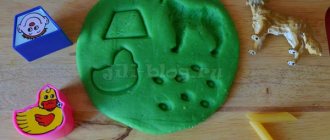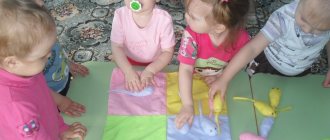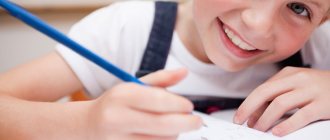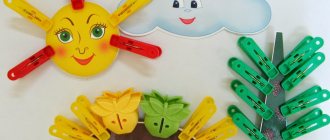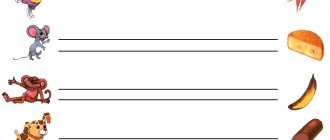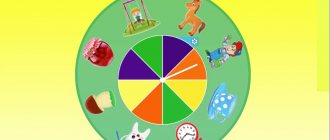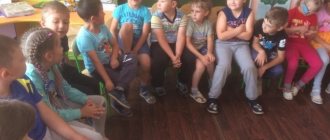What is the use of clothespins?
Ordinary clothespins can become an excellent play simulator and educational aid if you show a little imagination.
What can you use clothespins for?
- For the development of fine motor skills.
- Studying color.
- Speech development.
- Studying the account.
- Studying flowers.
- Sensory development.
- Fantasies.
- Imaginations.
- In memory.
- Attention.
- Grasping skills.
- Flexibility of the hands.
In addition, it should be borne in mind that children, from about 8 to 9 months old, enjoy tinkering with household objects much more than with toys. Cereals, cans, bottles, spoons, dishes, dad's tools, and clothespins, among others, keep kids occupied easily and for a long time.
Moreover, clothespins are much more “magical” than anything else: you can not only knock against each other, take or move them, but also bite, grab, and pinch. Parents can successfully use this fact by organizing games with clothespins - simple or using additional materials.
Build paths from dominoes
This may seem surprising to some, but a one-year-old child can already play dominoes! Of course, while there is no need to explain detailed rules to the child, tell him what a “bazaar” and “fish” are, he is unlikely to be interested in this. But the domino principle itself, based on the selection of identical pictures, can easily be grasped by a child.
To play, you will need a children's domino with pictures that the baby can understand (for example, we have this, other options are Ozon, My-shop). Explain to your child that you can build paths (or fences, as you prefer) from dominoes. But the paths are not simple: the dominoes in them must be selected so that the pictures on the edges match. Taisiya and I used dominoes to build a large fence, inside of which some animal would definitely live. Tasya could play dominoes on her own for a long time.
Make a picture using puzzle cubes
If your child is already familiar with simple puzzles, now you can invite him to assemble a picture on puzzle cubes (of 4 parts) (Labyrinth, Ozon, My-shop). This task is a little more difficult, because here, before placing the cube in the right place, the child must also turn it and find the appropriate side. At first, of course, you will have to twist the cube to find the right side, but while you are doing this, explain to your baby why you chose one side or another.
DIY games with clothespins
For these games you will need colored cardboard and a minimum of time. It takes a couple of minutes to cut the blank, but it will last a long time.
Using clothespins, we attach rays to the sun , rain to a cloud , and plant grass in the garden bed .
We make branches for the Christmas tree , tops for carrots and turnips , and thorns for the hedgehog . Since I'm not much of an artist, I chose to print the hedgehog.
Making ears for bunnies .
This is what we do. There are more than enough such games. But you can come up with many other options : attaching legs and arms to little people, fingers to palms, paws to bugs, petals to flowers, legs to animals, wings to an airplane, leaves to a tree, etc.
And you can create three-dimensional objects by attaching, for example, legs to a table .
Multicolored circle . Another of our favorite games. Its creation will take a little more time, but the results will please you.
I cut a circle out of cardboard, divided it into 6 parts, and colored each part to match the colors of the clothespins I had. I drew circles along the outer edge: from two to five. Antoshka attaches clothespins of the corresponding color according to the number of circles. The game is well suited for children learning to count.
We feed the chick . Meet Gosha, the always hungry chick. Mommy clothespin feeds him worms. And Antoshka helps her.
It’s easy to make such a chick; in the future it can be used not only for playing with clothespins. We cut out a beak in the lid of the jar, glued the eyes, crest and wings to double-sided tape. We use hair bands, cut laces, etc. as bugs and worms.
Choosing clothespins
A set of clothespins is inexpensive, they come in different colors, and multi-colored samples for games are, of course, preferable. As for the material, it can be either plastic or wood. It is important that the spring of the clothespins is not the most powerful. It’s better not to even take new ones, but to play with used ones - with frequent use they cease to be very tight, which means they cease to be dangerous for the child. A new and tight clothespin can pinch a baby’s finger, and quite painfully. If you decide to take wooden ones, you need to pay attention to their processing. If the wood is not properly processed, burrs may remain on it. When a child interacts with a clothespin, the burrs can get under the baby's skin. Is it dangerous.
There will be no such problems with plastic clothespins, but they themselves are considered less environmentally friendly. But there are usually more bright shades among plastic clothespins. And there are small stationery clothespins, which sometimes replace clothespins. But you can’t play with younger children like that; their motor skills are not developed enough to handle small objects. And the small size is also dangerous because a two-year-old may want to try a clothespin “on the tooth”, and this is already a threat to his health.
Use a sponge to pour water from one bowl to another
The game is in many ways similar to the previous one, but still gives the child slightly different sensations. A few tips: firstly, place a bowl of water on the left and an empty bowl on the right , then the child will pour water from left to right, this direction of action is important for placing his hand before writing. Secondly, it should be noted that it is more convenient to play with a sponge that is completely soft (without a hard part); if you were unable to buy a soft sponge, then cut off the hard part with a knife.
Cut with scissors
After 1 year 9 months, the child’s motor skills become more and more perfect, and you can already begin to introduce the child to scissors. Surely you have already heard about the famous Kumon notebooks (Labyrinth, Ozon, My-shop), which can teach any child how to cut, but if the child has never worked with scissors before, do not rush to immediately purchase notebooks and complete tasks. At the first stage, your main task is to teach your child to hold scissors correctly, open and close them, and simply introduce the child to the process of cutting paper into pieces.
First, let your child learn to make short cuts along the edge of the sheet. And only then, when his actions are more confident, offer to make several cuts in succession along the drawn line. So, before class, you can draw a few not too long lines on a small sheet of paper and invite your child to cut the sheet along these lines.
Naturally, for classes you need to purchase special children's scissors with blunt ends and it is advisable that the scissors have one ring small and the other larger. The thumb must be inserted into the small hole of the scissors, and the index and middle finger into the large one . If it is more convenient for the baby, you can also insert your ring finger into the large hole. It is also important to teach the child to correctly hold the sheet with his left hand (if the child is right-handed).
A little later, you can move on to Kumon notebooks; the unusual tasks in them stimulate the child’s interest. Taisiya, for example, developed a passion for Kumon tasks at the age of 2 years and 2 months. In parallel with the use of notebooks, you can continue to draw lines on paper, gradually complicating them: adding zigzags, waves, etc.
Play with two- or three-layer insert frames (puzzles)
Multilayer frame inserts are simply amazing toys; they combine the functions of both a puzzle and a platform for a story game. As a rule, such inset frames show the child one object in different sections, for example, a house (bus, car) inside and outside. This representation of an object contributes to the development of the child’s imaginative thinking. And it’s just incredibly interesting! Even parents
For example, the puzzle “House of Hares” (My-shop, Read) consists of the following layers: on the lowest layer the bunnies woke up and got out of their beds (in this case, you can get each hare and play a small plot game with them), on the next layer the awakened hares have already begun to carry out some kind of activity: drinking tea, taking out toys, on the third layer the house is shown from the outside and you can see what the hares are doing on the street. Here are interesting options for two-layer puzzles - House or Bus.
In this game, the child learns to distinguish the details of each layer and combine them not just by the similarity of objects (as in ordinary frame inserts), but by meaning.
